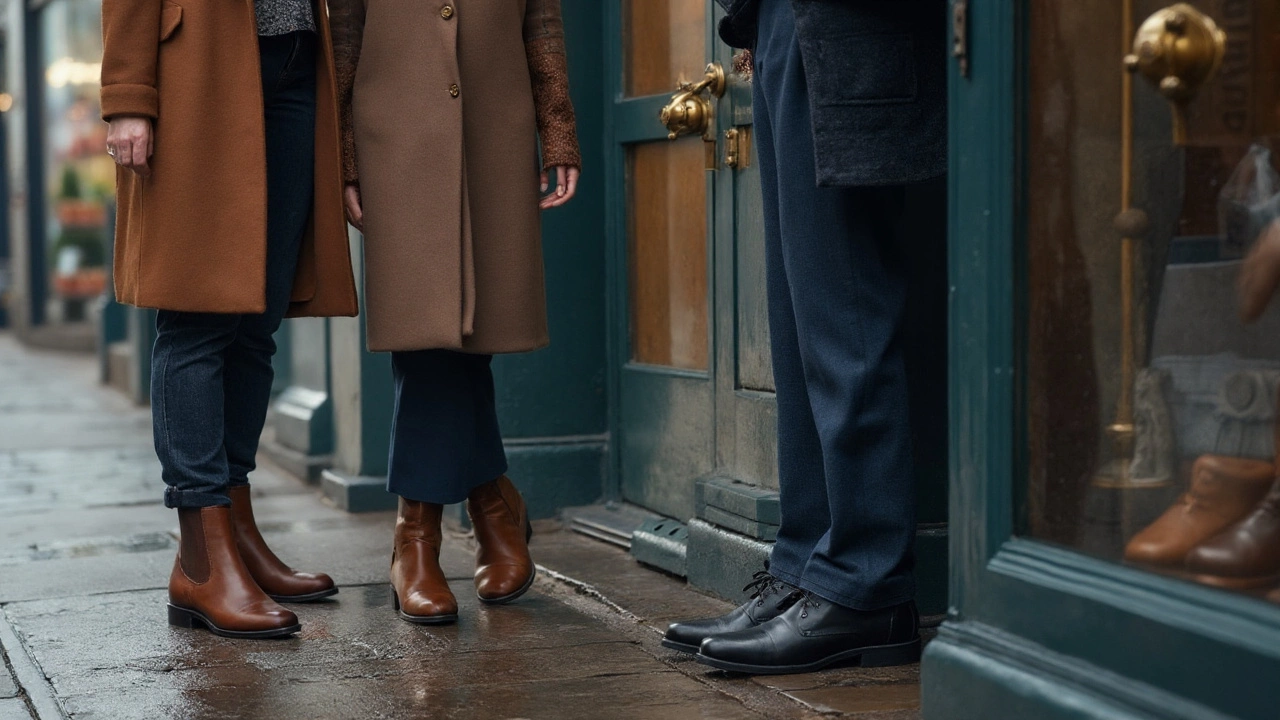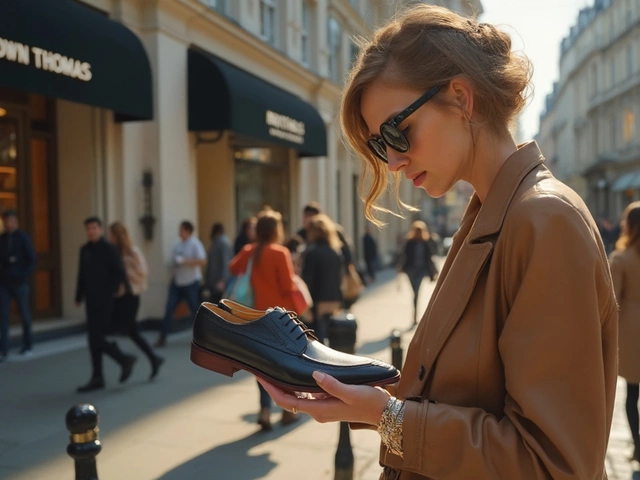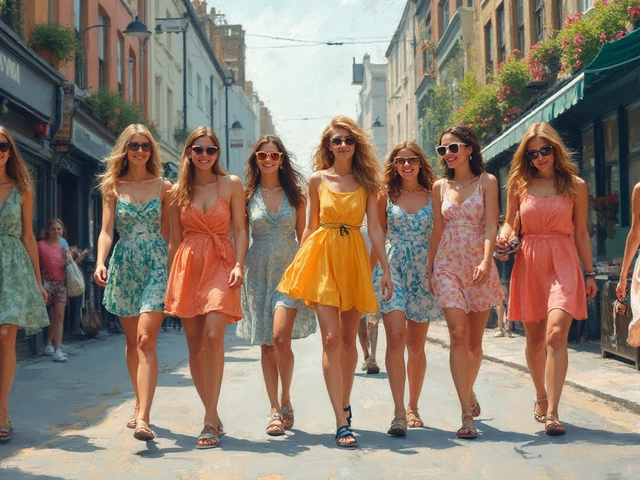Irish weather throws a lot at our shoes-wet streets, slick cobbles, and surprise downpours. So if you’re wondering who should wear square toe boots in Ireland, you’re really asking two things: do they suit your feet and do they suit your life here? The short answer: they’re brilliant for wide forefeet, bunions, active days (city or country), and anyone who likes a more grounded, modern look. They’re not perfect for every dress code, and the shape can overpower very slim outfits if you don’t balance it right. We’ll keep this practical, with fit rules, styling ideas for Irish settings, and pitfalls to dodge-so you can tell, quickly, if they’re your next everyday boots in Dublin, Cork, Galway, Belfast, or beyond. If you’re searching for square toe boots Ireland tips, you’re in the right place.
TL;DR: Who square toe boots are for (and not for) in Ireland
Here’s the quick take before we get into details.
- Best for: Wide forefeet, bunions, long toes, or anyone who hates cramped toe boxes. A broader front gives toes room to splay, which can cut hot spots on long walks across Dublin or during festival days like Electric Picnic.
- Great for: Country and equestrian life (Ariat square-toe western boots are popular at shows and on yards), trades and farm work (sturdy silhouette; easier toe splay), and casual city outfits where chunkier footwear feels right.
- Works with: Straight or relaxed jeans, workwear chinos, midi skirts, and dresses with weight or structure. Good with Irish weather layering-coats, knits, and waxed jackets.
- Think twice for: Strict office/formal wear (pointed or almond toes look sharper) and very slim trousers that can make the square toe look too blocky.
- Fit watch-outs: Narrow heels can slip in wider-front boots; solve with a thin heel grip or tongue pad. Waterproofing is non-negotiable in Ireland-treat new boots before that first rainy commute on the Luas.
How to decide in minutes: Fit, function, and proportion (step-by-step)
Start with your feet, then your lifestyle, then your wardrobe. That order saves money and returns. Here’s a simple sequence that works in the Irish market, where we bounce between wet footpaths and casual offices.
- Check your forefoot width and toe shape.
- Wide forefoot or bunions? Square toe boots often feel instantly better. Research in Footwear Science (2018) found that more forefoot volume reduces pressure peaks on the big toe joint-exactly where bunions burn.
- Long second or third toes? A square front prevents toenail rub thanks to extra front clearance.
- Very narrow foot? You can still wear square toes, but look for a slimmer last or a “snip square” (softly squared) to keep the look balanced.
- Match boot type to your week.
- City commuter (Dublin/Cork/Limerick): Waterproof leather or treated suede, grippy sole for slick pavements, and a medium square toe. Great with straight jeans or wide-leg trousers.
- Country/equestrian: Square-toe western styles (Ariat, some Dubarry silhouettes) are practical for yard work and events. Many riders in Ireland like the extra wriggle room in the forefoot.
- Trades/farm: Square toe can feel more stable under load; choose oil-resistant soles and proper safety features if needed. Some safety boots come squared but check toe-cap certification first.
- Office casual (tech, creative, education): A sleek square-toe Chelsea or roper boot pairs with dark denim or structured trousers. For stricter suits, switch to almond/rounded toes.
- Choose the right square shape.
- Classic square: Most room. Looks chunkier. Best for wide feet, workwear looks, and jeans.
- Snip square: Slightly tapered sides, squared off at the tip. More refined; easier to wear with smart-casual.
- Square cowboy roper: Shorter shaft, clean vamp. Country-smart without going full rodeo.
- Heuristics to avoid returns.
- Between two sizes? Size up if the toe box is structured and doesn’t stretch, size down if the brand runs wide and leather is known to give (ask in-store-Arnotts and Brown Thomas staff usually know their lasts).
- Try on late afternoon when feet are slightly swollen. Wear the socks you actually use-merino in winter, thin cotton in spring.
- You want 6-10 mm front clearance when standing. If your big toe hits the front, it’s a no.
- Balance your outfit proportions.
- Boot looks blocky? Add weight up top (chunky knit, a trench, or a structured blazer). It evens out the silhouette.
- Wearing slim trousers? Either crop above the shaft or pick a snip-square toe so the front doesn’t dominate.
If you’ve got foot pain, don’t guess. HSE guidance on bunions and plantar fasciitis leans on roomy toe boxes and supportive insoles. Square toes help with the first part; get arch support sorted with a proper insole if needed.
To put shape choices in context, here’s a quick comparison you can screenshot before you shop at Kildare Village, Very Ireland, or your local independent in Galway.
| Toe shape | Best for feet | Dress code | What it does well | Watch-outs | Where in Ireland it shines |
|---|---|---|---|---|---|
| Square | Wide forefoot, bunions, long toes | Casual to smart-casual | Roomy front, stable footing, modern workwear look | Can look boxy with skinny trousers | Wet commutes, markets, casual offices, festivals |
| Snip square | Average to slightly wide | Smart-casual | Refined but comfortable; good with blazers | Less volume than full square | Meetings in Grand Canal Dock, city dinners |
| Rounded | Most foot shapes | Casual | Timeless, easy with anything | Less toe splay for very wide feet | Weekend wear, school runs, errands |
| Almond | Average or narrow | Smart to formal | Streamlined; neat under trousers | Can feel snug on wide toes | Offices with dress codes, events |
| Pointed | Narrow feet | Formal/fashion | Sharp silhouette for tailored looks | Tight for toe splay, less stable in rain | Evening wear, dressy nights |
Why the emphasis on space? A 2020 review in the Journal of Foot and Ankle Research notes wider toe boxes reduce peak pressures across the forefoot in everyday walking. If you walk a lot (most of us do-Irish city centres are compact, and many streets use stone or cobbles), that pressure relief is gold.

Real-life Irish scenarios: what to wear, where, and why it works
Here’s how square toe boots play out across the places we actually go-from Grafton Street to the Galway Races.
City commuter (rain on-and-off all day): Pick a leather square-toe Chelsea with a weatherproofing treatment and a rubber sole. Wear with straight dark denim, a fitted knit, and a trench or parka. On slick O’Connell Street paving, that grippy sole matters. I live in Dublin and I won’t step out in autumn without a fresh spray of protector-my husband Liam steals it for his boots too.
Casual office (tech or creative): Go for a snip-square ankle boot. Team with tailored trousers (slightly cropped) and a boxy blazer. That tiny crop stops the hem pooling on the boot and keeps the silhouette clean. Most Irish offices in 2025 lean smart-casual; you’ll fit right in.
Country weekends and yard days: Western square-toe styles are made for this. Ariat is big across Ireland’s equestrian scene for a reason: support, grip, and room in the toes. With weather swinging fast, layer merino socks and keep a boot jack in the car. For shows, a tidy roper boot under a straight jean looks neat without going full cowboy.
Festivals (Electric Picnic, All Together Now): Square-toe lace-up or pull-on boots with a lug sole handle grass and queues. Wear with a midi dress plus a sturdy jacket. In festival mud, a blockier toe reads purposeful, not fussy. Rinse mud off with lukewarm water, then reproof when you get home.
Galway Races or a dressy day out: Square toes can work if the boot is sleek-think snip-square in a polished leather, with a midi skirt or structured dress. If the event is very formal, swap to almond toes. Don’t fight the dress code.
Trades and farm work: Some Irish safety boots come with a squarer forefoot. Comfort-wise, that’s a win if you’re on your feet all day. Just check standards (look for EN ISO 20345 on the label), oil/acid-resistant soles, and toe-cap type (composite feels lighter in winter).
Night out on Camden Street: Try a black snip-square heeled boot with straight black jeans and a leather jacket. The squared tip keeps the outfit now, not nostalgic.
Two small style tricks that change everything:
- Add weight somewhere else. If your toe looks chunky, balance with a heavier coat, a stiff denim jacket, or a knit with texture. The eye reads balance, not bulk.
- Mind your hem. Skimming the top of the boot looks tidy. If your jean bunches, either crop or choose a slimmer boot shaft.
Weather note: Met Éireann shows a lot of wet days across the year in many counties. A basic waterproofing routine is part of owning boots here: protect new leather, let it dry away from radiators, and rotate pairs so they can breathe between wears.
Answers and next steps: FAQs, checklists, and quick fixes
These are the follow-ups I hear most-plus the steps to act on them today.
Mini‑FAQ
- Are square toe boots in or out in 2025? In. Western and workwear shapes are everywhere-chunkier soles, roomy toes. Trend aside, the comfort is what keeps them in rotation here.
- Do they make feet look bigger? A bit. The front is wider, so it reads larger. Balance with structured clothes or pick a snip-square for a slimmer look.
- Good for bunions or neuromas? Often, yes. A wide, high toe box reduces pressure on the big toe joint and forefoot. Pair with supportive insoles if you have arch issues-your GP or a podiatrist can advise; the HSE has solid guidance on foot pain basics.
- Can I wear them with suits? Usually no for formal suits. For relaxed tailoring, a sleek snip-square can work if the leather is polished and the sole isn’t too chunky.
- What about hiking? Proper hiking boots beat fashion boots. For Wicklow trails, you’ll want ankle support, lugs, and membranes designed for miles, not just city walks.
- Steel toe vs square toe-same thing? No. “Square toe” is a shape. Steel or composite toes are safety features. You can have square safety boots, but check the standard first.
Decision checklist (quick yes/no)
- Your toes feel cramped in most boots → Try square or snip-square.
- You need office-formal → Choose almond or rounded.
- You live in denim and workwear jackets → Square toe fits the vibe.
- You prefer slim trousers and dainty tops → Snip-square or almond keeps balance.
- You walk a lot in the rain → Waterproof leather + rubber sole is non-negotiable.
Try‑on guide you can use in-store (Arnotts, Brown Thomas, local independents, or at Kildare Village)
- Wear your real socks. If you use insoles, bring them.
- Stand for a minute. You want wiggle room in all toes and no front contact.
- Walk on a hard surface. No heel slip beyond a tiny lift; no rubbing at the little toe.
- Check flex point. The boot should bend where your foot does, not behind it.
- Do stairs if you can. Look for lift at the heel and any pressure on the big toe joint.
- Look in a full-length mirror. If the toe dominates, you need a slimmer last or a snip-square.
Care and weather-proofing that actually holds up in Ireland
- Before first wear: Apply a protector (spray for nubuck/suede; cream/wax for leather). Let it cure.
- After wet days: Brush off dirt, stuff with paper, dry away from heat, then condition.
- Products: Cream polish for colour, dubbin or wax for heavy rain, spray repellents for suede. Nikwax and Saphir are reliable; many Irish cobblers stock good neutrals.
- Resoles and repairs: Independent cobblers in Dublin, Cork, and Galway can handle stitching and Vibram-style soles. A half-sole and heel can add a year or two to a favourite pair.
Style shortcuts (Ireland edition)
- With jeans: Choose straight or relaxed. If you love skinnies, show ankle or go snip-square to avoid the “block foot” look.
- With dresses/skirts: Midi lengths love square toes. Add a trench or blazer to match the boot’s weight.
- With suits: Only if the suit is relaxed and the boots are refined. Otherwise, switch toe shape.
Where to find them here
- City department stores: Arnotts and Brown Thomas often carry fashion-forward takes (snip-square Chelseas, refined ropers).
- Equestrian retailers: Look for Ariat square-toe styles at Irish stockists (TRI Equestrian, various independents).
- Outlets and online: Kildare Village has rotating boot options; Very Ireland and brand sites deliver country-wide.
Troubleshooting common issues
- Heel slip: Add a thin heel grip or tongue pad. If you’re compensated by over-tight laces, you’ll cause instep pain-get the fit right instead.
- Toes still cramped: You need either a wider last, a size up, or a different toe shape. Square should feel roomy; if it doesn’t, the last is wrong for you.
- Scuffs on the square front: Normal. Use cream polish for leather; for suede, a rubber brush helps. Consider a toe-cap sole guard if you’re hard on shoes.
- Looks too chunky: Change the outfit balance-crop the hem, add a structured top-or switch to snip-square.
Who should skip them?
- Anyone bound by formal dress codes daily-almond toes will stress you less.
- People who only wear very slim tailoring with delicate fabrics-the proportion fight won’t end.
- If you need a lightweight shoe for long indoor days-consider a flexible rounded-toe boot or a dress shoe with support.
Last thought: if you’ve avoided square toes because they felt “too much,” try a snip-square in a mid-brown with a simple upper. It reads modern, not loud, and it loves Irish rain once you’ve sealed it.





